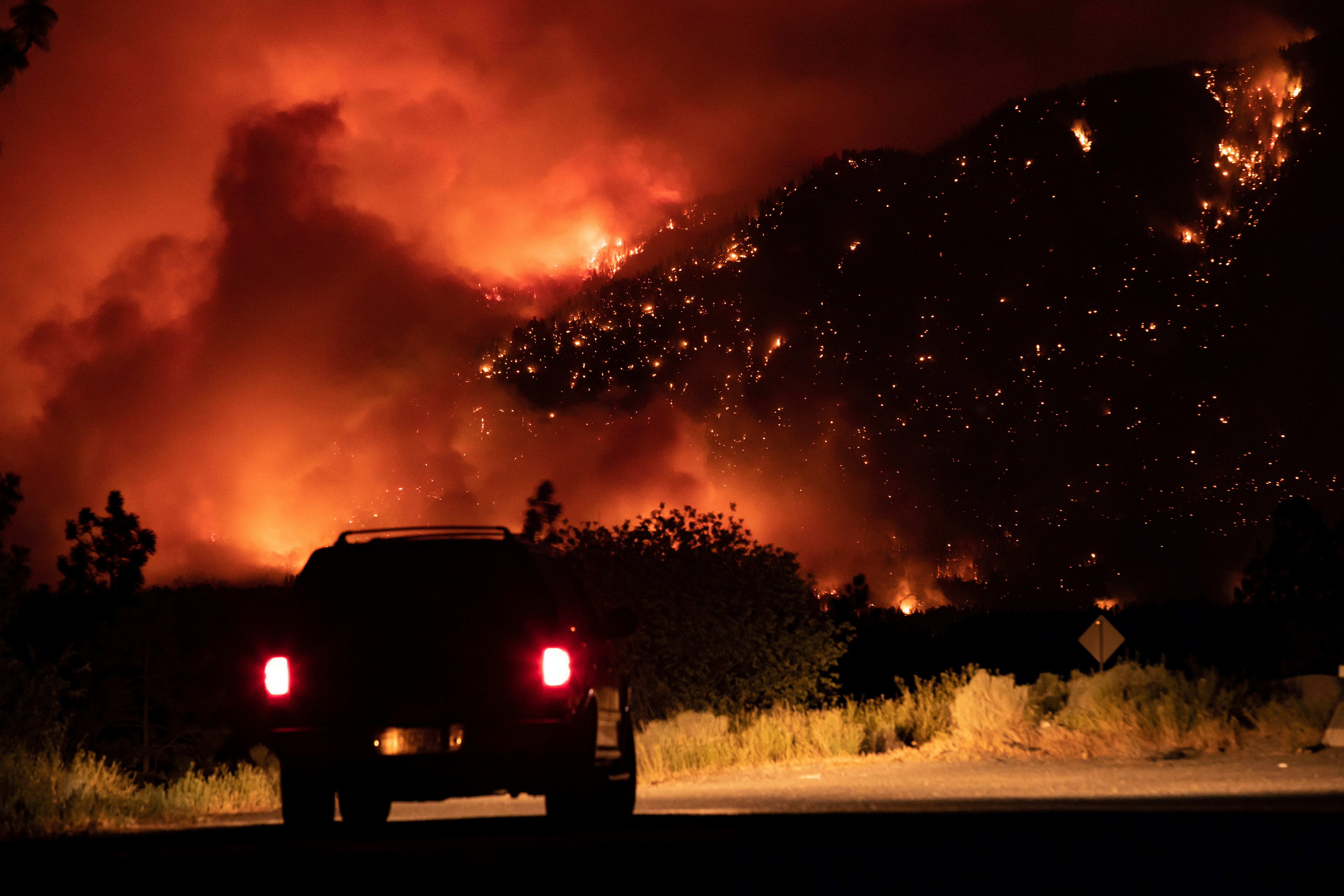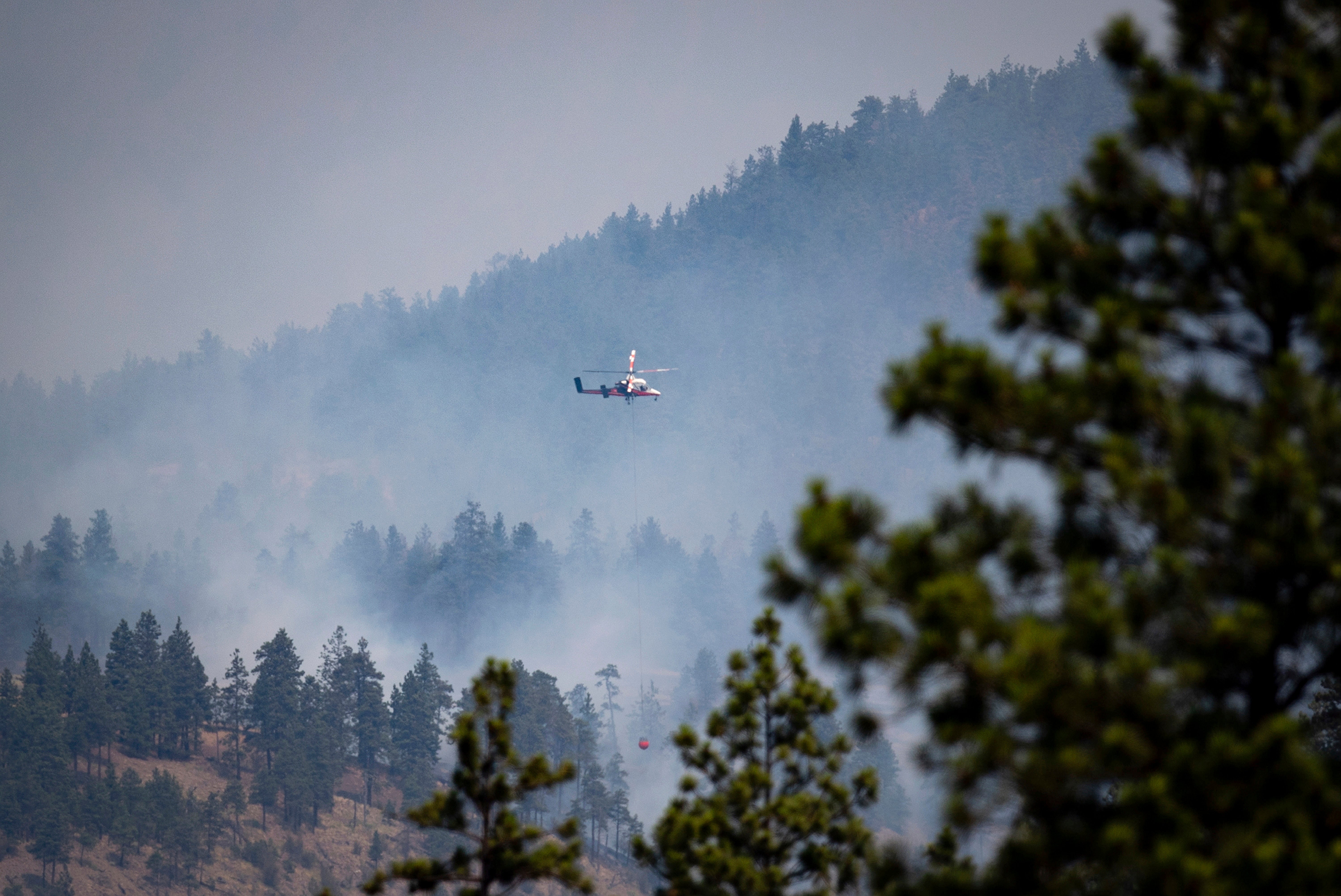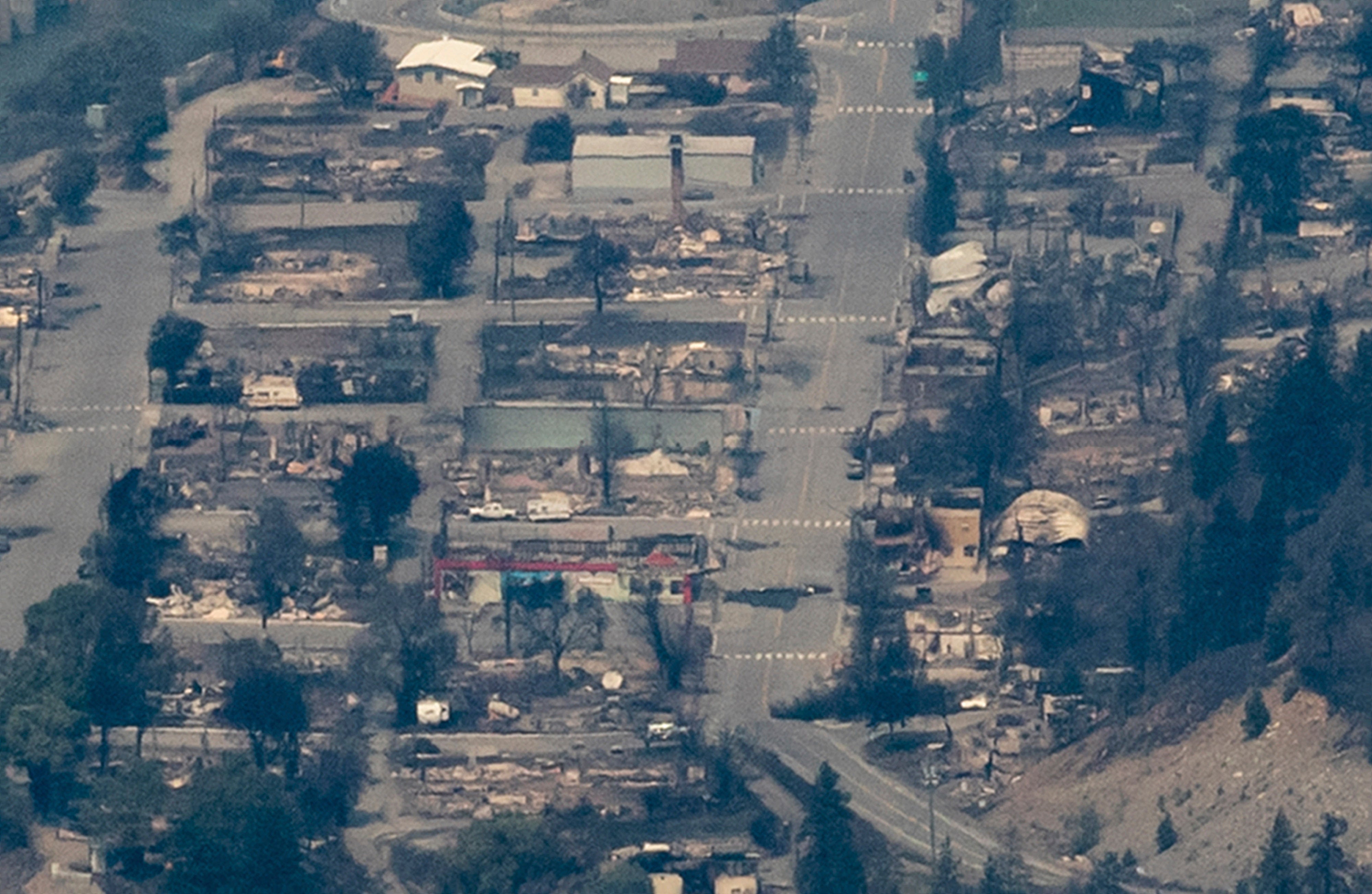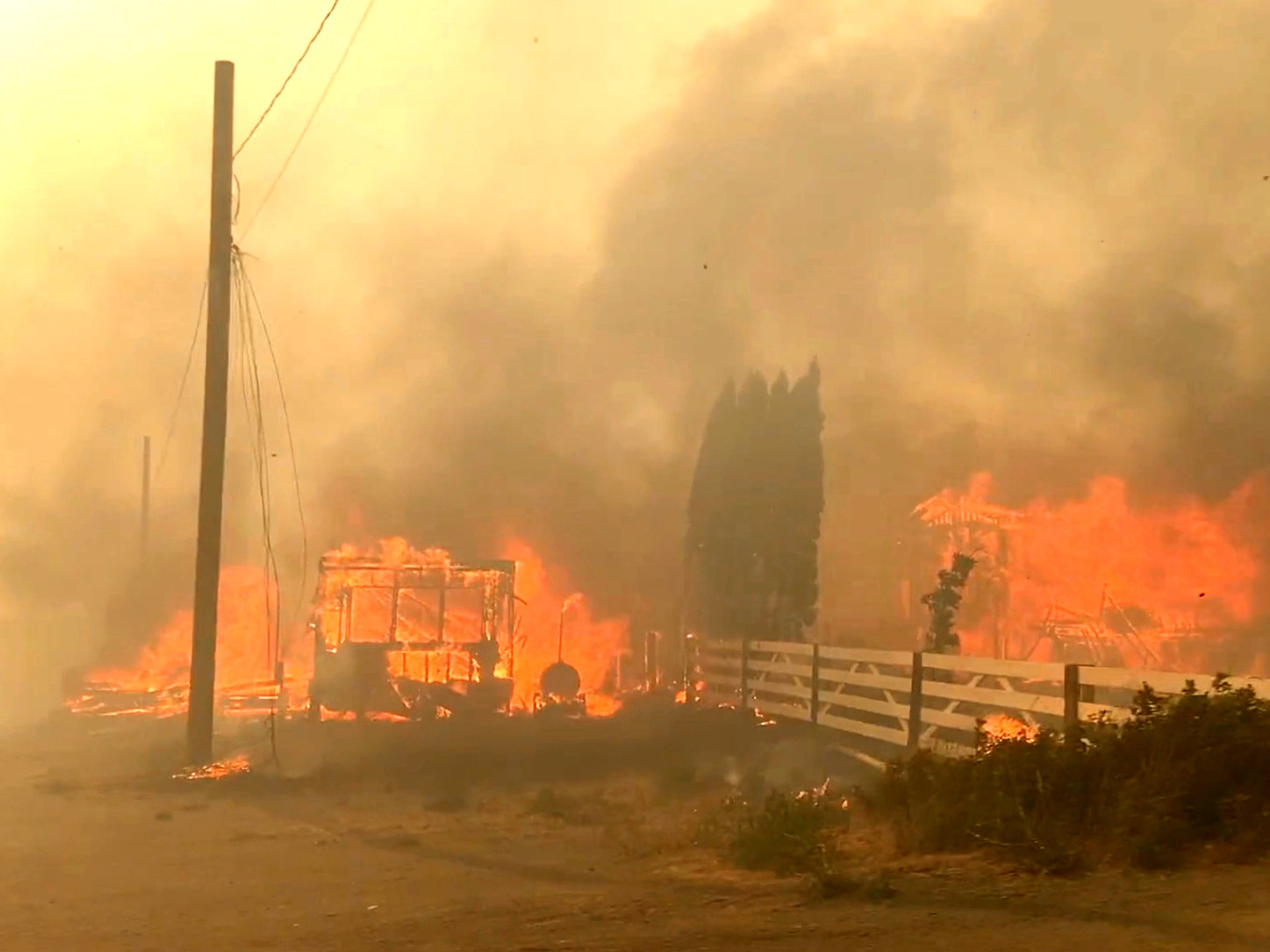‘We were neglected’: Lytton residents call for accountability after fire that destroyed town
‘They predicted the heatwave, but didn’t take any precautions to protect the town,’ one evacuee of Lytton claims
Your support helps us to tell the story
From reproductive rights to climate change to Big Tech, The Independent is on the ground when the story is developing. Whether it's investigating the financials of Elon Musk's pro-Trump PAC or producing our latest documentary, 'The A Word', which shines a light on the American women fighting for reproductive rights, we know how important it is to parse out the facts from the messaging.
At such a critical moment in US history, we need reporters on the ground. Your donation allows us to keep sending journalists to speak to both sides of the story.
The Independent is trusted by Americans across the entire political spectrum. And unlike many other quality news outlets, we choose not to lock Americans out of our reporting and analysis with paywalls. We believe quality journalism should be available to everyone, paid for by those who can afford it.
Your support makes all the difference.Residents of a village destroyed by wildfire in Canada’s British Columbia province say the devastation could have been avoided if authorities had ensured they were better prepared.
A fire decimated the small town of Lytton on 30 June, just days after it broke the record for Canada’s all-time highest temperature for three days in a row, reaching a blistering 121.1F (49.5C).
Canadian prime minister Justin Trudeau met with Lytton mayor Jan Polderman, Lytton First Nation chief Janet Webster, and Nlaka’pamux Nation Tribal Council chief Matt Pasco in Vancouver on Thursday. The outcome of that meeting is not yet known, as no public statements have been given.
The meeting came as Lytton residents prepared to see at first hand the fate of their town and homes for the first time since it was destroyed more than a week ago. A bus trip has been organised by the Thompson-Nicola regional district to take residents back for a brief drive through Lytton, which has been cordoned off since the fire passed through, on Friday.

But for many residents, closure will not come with a trip back to inspect their destroyed homes. Many have questioned why no preventative measures were put in place to safeguard against the threat of a wildfire breaking out, when fires are common in the area and the heatwave had been forecast.
“They predicted the heatwave, but didn’t take any precautions to protect the town,” Lytton evacuee Cassandra Melanson said.
Ms Melanson said confusion still lingered over the evacuation order from the mayor, which was issued at 6pm on 30 June after the fire had already begun spreading across the town.
The order was seemingly drafted at 3.30pm, according to a timestamp on the evacuation notice, but Ms Melanson said flames had already reached her home by about 5pm.
“We were never evacuated. Most Lyttonites couldn’t even pack because they had no warning for this fire. We could and should have been warned. I cannot fathom the lack of accountability here. Everything is gone.”
However, an Emergency Management BC spokesperson told The Independent that a “tactical evacuation” by the RCMP (Royal Canadian Mounted Police), who were notifying residents on the ground as the fire was being reported, was “well under way” before the evacuation order was drafted and sent out.

Ms Melanson said she became aware of the fire from an “ominous red and black glow” that she spotted while inside her house. By the time she had gathered some things to flee with, the fire was “nearly 20ft tall in front of my house”.
“I went back to grab one more thing, but my living room was blazing. I ran to my car, and fire was chasing me. I was hyperventilating harder than ever.”
With her dog in her car, Ms Melanson said she drove through town trying to warn people, and called the people she knew who were living on the edge of town to try and give them warning.
She believes people could have been further confused over an evacuation order issued on 17 June, for the Kitzowit 20 Indian Reserve of the Lytton First Nation, which was rescinded days later. This meant people had a “false sense of security”, rather than being prepared to evacuate again.
Ms Melanson said villagers had also raised concerns days earlier over the extreme heat in the town.
“If only they listened,” she said. “Some people were asking the trains to reduce frequency during the heatwave because of the constant sparks. But whatever caused it, it really doesn’t matter. It was going to happen anyway.”

City councillors from Lytton released their first statement on the fire on 6 July, almost a week after the town was destroyed.
It said that councillors were alerted when someone “banged on the office windows after hours”.
Staff immediately contacted mayor Jan Polderman and the Lytton Volunteer Fire Department fire hall, only to find that firefighters were already battling fires.
“The mayor quickly reached out to several contacts to attempt to confirm the severity of the fire. He also called 911 and was informed that the local RCMP were already evacuating residents. The mayor immediately contacted the Thompson-Nicola regional district to let them know that he was ordering a full evacuation.”
The fire then spread east across the town with “ferocious speed”, leaving almost every home in the centre of the village simply “charred earth”.
“Infrastructure has been destroyed. What has not been melted, incinerated or damaged beyond repair has been compromised to the point of being unsafe,” the statement added.
The death toll remains at two. There are currently no missing persons associated with the fire, according to the RCMP.

British Columbia’s public safety minister Mike Farnworth admitted this week that communication with First Nation leaders “didn’t live up to expectations” after Tribal Council chair Matt Pasco described the lack of evacuation communication with indigenous communities as “sickening” in an interview with CBC. Mr Pasco said it took hours for emergency authorities to respond to his requests for coordination and assistance.
An Emergency Management BC spokesperson told The Independent that they were now working to put better systems in place “based on lessons learned”.
“There were challenging factors in this situation which made it difficult for early communication, and the ministry has taken immediate steps to address gaps in protocols that contributed to this.”
Lytton resident Pierre Quevillon said decision-makers in the town needed to “wake up” and install better warning systems and preparation guidelines for wildfires.
“All these small communities in BC, they’re going to have to change the systems. There need to be better warnings or [the fires] are going to be everywhere.
“It’s already happened three times, there have been big fires here three times. And nobody figured it out, that we have to put in a friggin’ siren to advise people to get out.”
Another resident of the town, Neil Dycke, agreed that a warning system should be installed, similar to that of a tsunami alarm in coastal areas. Mr Dycke is 72 years old and does not drive, so evacuation was especially difficult for him. He was rescued from the side of the road by Mr Quevillon and driven to the emergency services centre in Chilliwack, 176km away.

Join our commenting forum
Join thought-provoking conversations, follow other Independent readers and see their replies
Comments